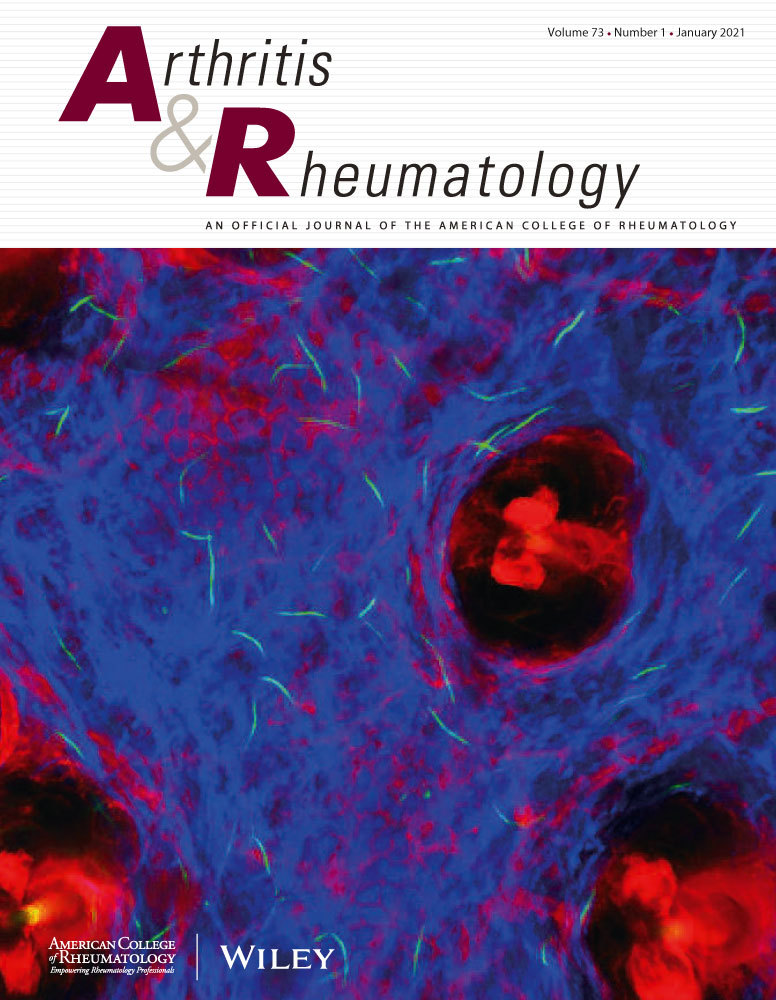溶酶体相关膜蛋白3的研究强调溶酶体在Sjögren病病理生理和治疗中的作用。
IF 10.9
1区 医学
Q1 RHEUMATOLOGY
引用次数: 0
摘要
溶酶体相关膜蛋白3 (LAMP3)是一种独特的溶酶体膜蛋白,在成熟树突状细胞和II型肺细胞中特异性表达。它在唾液腺上皮细胞(SGECs)中的异位表达是由I型干扰素(IFN)信号诱导的,并通过toll样受体7 (TLR7)激活进一步扩增,这与Sjögren病(SjD)的发病机制有关。这种异常上调通过促进水通道蛋白5 (AQP5)和Na-K-Cl共转运蛋白1的内溶酶体降解破坏腺体功能,导致液体分泌受损和相关的临床后遗症(如口干)。此外,lam3介导的损伤相关分子模式溶酶体胞外分泌增强单核细胞骨形态发生蛋白6 (BMP6)的产生,进而抑制AQP5的转录。此外,LAMP3驱动细胞外囊泡介导的自身抗原释放,这进一步放大了自身免疫,并且sges中溶酶体依赖性细胞死亡有助于组织损伤。这些发现证实了LAMP3在SjD发病过程中是一个关键的调节铰链,连接IFN-TLR7信号,溶酶体功能障碍和腺体功能低下。它的核心作用使其成为一个引人注目的治疗靶点,包括IFN和TLR7途径抑制剂来限制其诱导,恢复溶酶体功能,抑制BMP6来保持AQP5的表达,以及水通道蛋白基因治疗来改善液体分泌。本文章由计算机程序翻译,如有差异,请以英文原文为准。
Investigation of Lysosome-Associated Membrane Protein 3 Highlights the Role of Lysosome in Pathophysiology and Treatment of Sjögren's Disease.
Lysosome-associated membrane protein 3 (LAMP3) is a unique lysosomal membrane protein specifically expressed in mature dendritic cells and type II pneumocytes. Its ectopic expression in salivary gland epithelial cells (SGECs) is induced by type I interferon (IFN) signaling and further amplified through Toll-like receptor 7 (TLR7) activation, which is implicated in the pathogenesis of Sjögren's disease (SjD). This aberrant upregulation disrupts glandular function by promoting endolysosomal degradation of aquaporin 5 (AQP5) and Na-K-Cl cotransporter-1, leading to impaired fluid secretion and associated clinical sequelae (e.g., dry mouth). Additionally, LAMP3-mediated lysosomal exocytosis of damage-associated molecular patterns enhances monocytic bone morphogenetic protein 6 (BMP6) production, which in turn suppresses AQP5 transcription. Moreover, LAMP3 drives the extracellular vesicle-mediated release of autoantigens, which further amplifies autoimmunity, and lysosome-dependent cell death in SGECs contributes to tissue damage. These findings establish LAMP3 as a pivotal regulatory hinge in SjD pathogenesis, linking IFN-TLR7 signaling, lysosomal dysfunction, and glandular hypofunction. Its central role makes it a compelling therapeutic target, with strategies including IFN and TLR7 pathway inhibitors to limit its induction, restoration of lysosomal function, BMP6 inhibition to preserve AQP5 expression, and aquaporin gene therapy to improve fluid secretion.
求助全文
通过发布文献求助,成功后即可免费获取论文全文。
去求助
来源期刊

Arthritis & Rheumatology
RHEUMATOLOGY-
CiteScore
20.90
自引率
3.00%
发文量
371
期刊介绍:
Arthritis & Rheumatology is the official journal of the American College of Rheumatology and focuses on the natural history, pathophysiology, treatment, and outcome of rheumatic diseases. It is a peer-reviewed publication that aims to provide the highest quality basic and clinical research in this field. The journal covers a wide range of investigative areas and also includes review articles, editorials, and educational material for researchers and clinicians. Being recognized as a leading research journal in rheumatology, Arthritis & Rheumatology serves the global community of rheumatology investigators and clinicians.
 求助内容:
求助内容: 应助结果提醒方式:
应助结果提醒方式:


